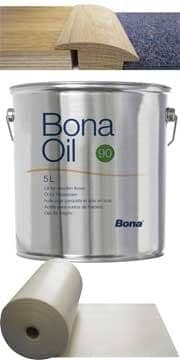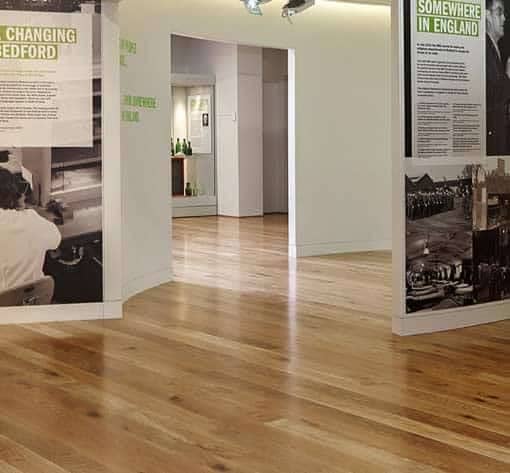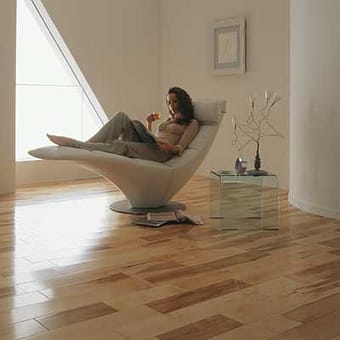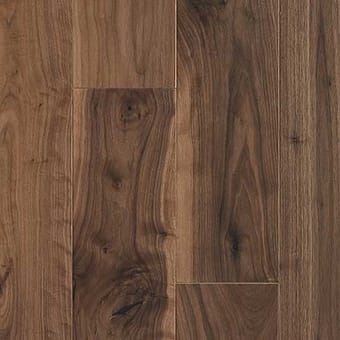Solid Wood
Solid Wood Flooring in Traditional Homes: A Timeless Elegance
Solid wood flooring, with its intricate patterns and rich tones, has long been synonymous with luxury and tradition. Its roots trace back to ancient civilisations, where it was a symbol of luxury and craftsmanship. Over the centuries, as architectural styles evolved and homes became more than just shelters, solid wood flooring remained a constant, adding warmth, character, and a touch of nature to living spaces. Traditional houses, emphasising timeless design and quality, have always embraced solid wood flooring, making it a centrepiece of their interiors. As we navigate this guide, we aim to unravel the depth of solid wood flooring, its captivating history, the nuances that make it unique, and its undying relevance in home design.
Quick Summary:
Set forth on an enlightening journey that delves into the world of solid wood flooring. From its ancient origins to its modern-day applications, this guide offers a comprehensive look into the art and science of solid wood flooring. Discover its transformative power, the intricacies of its installation, the secrets to its longevity, and its unparalleled role in shaping the ambience of traditional homes.
Table Of Contents:
1.The Enchanting World of Solid Wood Flooring
2.Pivotal Benefits in Traditional Homes
3.Decoding the Installation Process
4.A Comprehensive Care and Maintenance Guide
5.Exploring the Richness of Wood Varieties
6.Eco-Friendly Attributes: The Green Perspective
7.Solid Wood: The Epitome of Elegance
8.FAQ: Addressing Common Queries
1. The Enchanting World of Solid Wood Flooring
Solid wood flooring, with its rich textures and natural beauty, has been a cornerstone in the architectural history of homes. It has been a symbol of luxury, craftsmanship, and tradition for generations. Each plank, shaped with precision and care, carries stories of ancient forests, skilled artisans, and the passage of time. These stories come alive in the grain patterns, the hues, and even the sounds the floor makes underfoot. It’s not just a floor; it’s a canvas of nature’s artistry, adding layers of history, elegance, and soul to every space it graces.
2. Pivotal Benefits in Traditional Homes
Aesthetic Brilliance: Solid wood flooring isn’t just about the material; it’s about the ambience it creates. Its timeless charm complements traditional decor, creating grand and cosy spaces.
Robustness: Solid wood is nature’s masterpiece. Its strength and resilience mean that, with proper care, it can witness generations holding stories of playful kids, family gatherings, and quiet moments.
Enhanced Property Value: Solid wood flooring is more than an aesthetic choice; it’s an investment. Homes with such flooring often see a significant appreciation in value, making it a favourite among real estate enthusiasts.
3. Decoding the Installation Process
Solid wood flooring installation is a meticulous process that requires expertise:
Acclimatisation: Wood, a natural material, must adapt to its new environment. This step ensures it’s in harmony with the room’s conditions, reducing future issues.
Subfloor Prep: The foundation is crucial. A well-prepared subfloor ensures the wood lays perfectly, providing stability and longevity.
Laying Techniques: The beauty of solid wood installation lies in its versatility. Whether it’s the traditional nailing method, or adhesive glueing technique, each has its merits, tailored to specific needs.
4. A Comprehensive Care and Maintenance Guide
With its natural beauty and elegance, solid wood flooring is a prized feature in many homes. However, a dedicated care regimen is essential to ensure its longevity and maintain its radiant glow. Here’s a detailed guide to help you navigate the care and maintenance of your solid wood floors:
Routine Cleaning:
A clean floor is a happy floor. Regular cleaning maintains the aesthetic appeal of your solid wood flooring and extends its life.
Daily Dusting: Gently sweep the floor with a soft-bristle broom or a microfiber mop. This prevents the accumulation of dust, dirt, and other small particles that can cause micro-scratches over time.
Weekly Vacuuming: For a deeper clean, vacuum the floor weekly using a hardwood-friendly vacuum cleaner. Ensure the vacuum has a soft brush attachment to avoid scratching the wood surface.
Monthly Mopping: Use a damp (not wet) mop and a wood-friendly cleaning solution. Always wring out the mop thoroughly to prevent excess moisture from seeping into the wood.
Immediate Spill Management:
Accidents happen, but quick action can prevent potential damage.
Blot, Don’t Wipe: In case of spills, use a soft cloth to blot the area immediately. Wiping can spread the liquid, increasing the affected area.
Avoid Harsh Chemicals: If the spill is staining, like wine or coffee, avoid using harsh chemicals to clean it. Instead, opt for a pH-neutral cleaning solution suitable for wood.
Ventilation: Ensure the room is well-ventilated after cleaning a spill to speed up the drying process and prevent moisture retention.
Periodic Refinishing:
Over time, even with the best care, solid wood flooring may show signs of wear. Refinishing can restore its former glory.
Assessment: Before deciding on refinishing, assess the floor for deep scratches, discolouration, or dullness. Minor issues might require a polish rather than a complete refinish.
Professional Help: Refinishing is a specialised task. It involves sanding the wood surface to remove the old finish and applying a new protective layer. It’s advisable to seek professional help to ensure the best results.
Frequency: Solid wood floors need refinishing every 7-10 years. However, high-traffic areas require attention sooner.
In conclusion, solid wood flooring is an investment that can last generations with the proper care. A consistent maintenance routine ensures that the floor remains a centrepiece in your home, radiating warmth and elegance year after year.
5.Exploring the Richness of Wood Varieties
The world of solid wood flooring is as diverse as nature itself. Each type of wood has unique properties and aesthetics and brings a different flavour to interior spaces. Let’s delve deeper into the characteristics and applications of some of the most popular wood varieties:
Oak:
Oak stands tall as one of the most popular choices for solid wood flooring. Its popularity isn’t just by chance.
Strength & Durability: Oak is known for its hard-wearing nature, making it perfect for areas that experience heavy foot traffic.
Grain Patterns: Oak’s pronounced grain patterns add texture and depth to floors, making each plank distinct.
Colour Variations: From light golden hues to deeper browns, oak offers a spectrum of shades that can complement various interior styles.
Versatility: Whether a rustic country home or a contemporary apartment, oak seamlessly fits in, enhancing the overall aesthetic.
Walnut:
Walnut is the epitome of luxury and sophistication in solid wood flooring.
Dark & Rich: Walnut’s naturally dark tones, ranging from deep browns to purplish-blacks, make a bold statement, adding a touch of luxury to spaces.
Smooth Grain: Unlike oak, walnut has a smoother grain, giving floors a sleek and refined look.
Ageing Gracefully: Walnut tends to lighten over time, adding character and a vintage charm to the floor.
Cherry:
Cherry wood is all about warmth, romance, and luxury.
Warm Reddish Tones: Cherry’s signature reddish-brown hue brings a cosy, inviting room ambience.
Fine Grain: The wood’s subtle grain patterns offer a smooth and elegant finish, making it a favourite for luxurious settings.
Natural Luster: Cherry wood has a natural sheen, which amplifies its beauty, especially under lighting.
Maple:
Maple is the go-to choice for homeowners seeking a modern and airy feel.
Light & Bright: Maple’s pale tones, ranging from creamy whites to light browns, can make spaces appear more extensive and open.
Durable: Despite its light colour, maple is hard and resilient, making it suitable for residential and commercial spaces.
Subtle Grains: Maple’s grain patterns are less pronounced, offering a uniform and contemporary look.
The world of solid wood varieties is a treasure trove of design opportunities. Each wood type, unique attributes, and charm allows homeowners and designers to craft spaces that reflect individual tastes, stories, and visions. Whether you’re seeking the rustic charm of oak, the luxury of walnut, the warmth of cherry, or the modernity of maple, there’s a wood that’s perfect for your dream space.
6. Eco-Friendly Attributes: The Green Perspective
In today’s world, where environmental concerns are at the forefront of many decisions, solid wood flooring emerges as a sustainable choice for homeowners and designers alike. Its eco-friendly attributes extend far beyond its natural beauty, making it a responsible choice for those conscious of their environmental footprint. Let’s delve deeper into the green qualities of solid wood flooring:
Sustainable Sourcing:
Solid wood flooring begins in the forest, and sustainable forestry practices ensure this journey is in harmony with nature.
Selective Logging: Instead of clear-cutting, selective logging ensures only mature trees are harvested, allowing younger trees to grow and maintain the forest’s ecological balance.
Reforestation: For every tree harvested, several saplings are planted in its place, ensuring the forest’s continuity and health.
Certifications: When purchasing solid wood flooring, look for certifications like FSC (Forest Stewardship Council) or PEFC (Programme for the Endorsement of Forest Certification). These certifications guarantee that the wood has been sourced responsibly.
Durability Equals Sustainability:
The longevity of solid wood flooring is not just a testament to its quality but also its sustainability.
Lesser Replacements: A well-maintained solid wood floor can last generations, meaning fewer replacements over the years. This reduces the demand for new raw materials and the energy associated with manufacturing and transportation.
Repair Over Replace: Minor damages in solid wood flooring can often be repaired rather than replaced. This not only preserves the original flooring but also reduces waste.
Biodegradability:
Even after serving its purpose for decades, solid wood flooring remains eco-friendly at the end of its lifecycle.
Natural Decomposition: Unlike synthetic flooring materials that might end up in landfills for centuries, wood decomposes naturally, returning to the earth and enriching the soil.
No Harmful Residues: As wood decomposes, it doesn’t release any toxic chemicals or pollutants, ensuring that the environment remains unharmed.
Repurposing Opportunities: Before reaching the end of its life, old wood flooring can often be repurposed into furniture, art, or other functional items, further extending its usability and reducing waste.
7. Solid Wood: The Epitome of Elegance
In the vast realm of interior design, few materials hold the allure of solid wood flooring. It’s a blend of nature’s finest work and human craftsmanship. Its elegance is timeless, its charm undeniable. Whether it’s a grand mansion or a quaint cottage, solid wood flooring elevates its character, making it not just a house but a home with stories, memories, and a legacy.
8.FAQ: Addressing Common Queries
Question: What happens to wood when the climate changes?
Answer: Wood is a natural substance and is sensitive to its surroundings. Wood boards can expand or contract in response to changes in temperature and humidity. During humid seasons, wood tends to absorb moisture and expand, while in drier conditions, it might contract. However, this natural response can be controlled. By using proper installation methods, such as allowing for expansion gaps and maintaining a consistent indoor humidity level between 35% and 55%, the effects can be reduced, and the flooring’s lifespan can be extended.
Q: Is solid wood flooring suitable for all spaces?
A: Solid wood flooring is incredibly versatile and can enhance the beauty of almost any room. However, it’s essential to consider the specific conditions of each space. Areas prone to high moisture or frequent water spills, such as bathrooms or laundry rooms, might not be ideal for solid wood. In such rooms, prolonged exposure to moisture can lead to warping or swelling of the wood. Opting for other solutions, like vinyl flooring, for these moisture-rich areas is advisable.
Q: How pet-friendly is solid wood flooring?
A: Solid wood flooring and pets can coexist harmoniously with a few precautions. While wood is durable, sharp pet nails can cause scratches or dents on the surface. To prevent this:
Ensure regular nail trims for your pets.
Place protective mats or rugs in areas where your pets frequently play or rest.
Immediately clean up any pet accidents to prevent stains or moisture damage.
Consider choosing wood species known for their hardness, like oak or maple, which can better resist potential damage.
Q: How often should solid wood flooring be refinished?
A: Refinishing is a great way to rejuvenate the look of solid wood flooring and address minor damages. The frequency of refinishing depends on several factors, including the type of finish, the amount of foot traffic, and the presence of pets. Solid wood floors need refinishing every 7-10 years. However, refinishing might be required more frequently in homes with high foot traffic or significant wear and tear. It’s essential to monitor the floor’s condition and consult with professionals when considering refinishing.
These are just a few of the many questions homeowners might have about solid wood flooring. It’s always a good idea to consult with flooring experts or manufacturers for specific queries or concerns.
The Ulimate Guide To Wood Flooring





